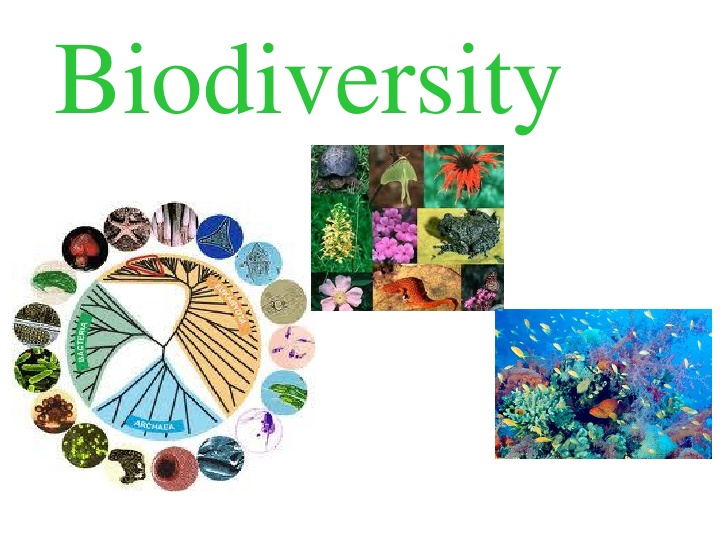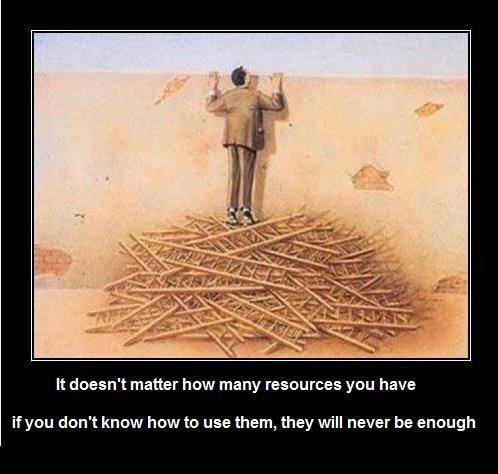Dr. V.K.Maheshwari, M.A(Socio, Phil) B.Sc. M. Ed, Ph.D
Former Principal, K.L.D.A.V.(P.G) College, Roorkee, India
 Until recently, biodiversity was a subject of purely academic discussions in narrow scientific circles.But the signing of the Convention on Biological Diversity by more than 190 countries at the Earth Summit in Rio de Janeiro in 1992 put this subject at the top of international environmental agenda and brought a sense of urgency to the issue of biological conservation.
Until recently, biodiversity was a subject of purely academic discussions in narrow scientific circles.But the signing of the Convention on Biological Diversity by more than 190 countries at the Earth Summit in Rio de Janeiro in 1992 put this subject at the top of international environmental agenda and brought a sense of urgency to the issue of biological conservation.
In the Convention on Biological Diversity explains biodiversity as follows:
“Biological diversity” means the variability among living organisms from all sources including terrestrial, marine and other aquatic ecosystems and the ecological complexes of which they are part; this includes diversity within species, between species and of ecosystems.
Biological diversity – or biodiversity – is the term given to the variety of life on Earth
across all of the different levels of biological organization. On a smaller scale, biodiversity can be used to describe the variety in the genetic makeup of a species, and on a larger scale, it can be used to describe the variety of ecosystem types.
Biodiversity comprises all the millions of different species that live on our planet, as well as the genetic differences within species. It also refers to the multitude of different ecosystems in which species form unique communities, interacting with one another and the air, water and soil.
The dictionary defines biodiversity as:
1. The number and variety of organisms found within a specified geographic region.
2. The variability among living organisms on the earth, including the variability within and between species and within and between ecosystems.’
The most common definition of biodiversity agreed upon by many experts in the field is:
Biodiversity is the variety of all life forms including animals & plants that can be found either in just one location, or on the whole planet.
Actually Biodiversity is the variety of plant and animal species present in the natural environment and Biodiversity is the number of species in a given habitat
The more formal definition is “the the variability among living organisms from all sources including inter alia, terrestrial, marine and other aquatic ecosystems and the ecological complexes of which they are part; this includes diversity within species, between species and ecosystems.”
The importance of biodiversity
Biodiversity comprises all the millions of different species that live on our planet, as well as the genetic differences within species. It also refers to the multitude of different ecosystems in which species form unique communities, interacting with one another and the air, water and soil.
The biodiversity is a result of 3.5 billion years of evolution. Unfortunately, due to humanity’s over-exploitation of natural resources, our unsustainable development and the resulting disturbances to the environment, it is undergoing the extinction crisis on this planet and degrading natural ecosystems at an unprecedented rate. It is estimated that the current species extinction rate is between 1,000 and 10,000 times higher than it would naturally be.
The future of biodiversity signifies the future of humankind. Its pathways to restoration or destruction are for humans to choose. It can be closely related to:
The loss of just one species can have different effects ranging from the disappearance of the species to complete collapse of the ecosystem itself. This is due to every species having a certain role within an ecosystem and being interlinked with other species.
Experiencing nature is of great importance to humans and teaches us different values. It is good to take a walk in the forest, to smell flowers and breath fresh air. More specifically, natural food and medicine can be linked to biodiversity.
Biodiversity is important not only for the variety of beautiful and interesting species it offers us, but it is also very important (and vital) to the stability of an ecosystem and our entire planet. It has been shown that biodiversity of an area has a large impact on the ecosystem stability of that area.
Biodiversity performs a number of ecological services for humankind that have economic, aesthetic or recreational value.
The intrinsic value of biodiversity is the idea that humans are part of nature. As humans are and were part of nature, they benefited from the evolutionary process.
Environmental ethicists also stress that humans should protect biodiversity because they are the cause of most of the loss of biodiversity through loss of habitat, overexploitation and other perturbations.
Biodiversity Ethics value
The protection of the environment is morally good, philosophy and religion have not incorporated the concept of nature conservation; it is not yet included in our ethical framework. The process of inclusion of these issues is one of social evolution.
Some people suggest that the idea of biodiversity reaches towards oneness, toward a unity of all living and non-living things. It is pointed out that humans, while removed from nature, still need to be surrounded by nature and they respond to this fundamental need by visiting natural parks and bringing nature into their daily lives with pets and plants.
Biodiversity Anthropocentric Value
Biodiversity, encompassing genetic diversity, species, populations, communities and ecosystems, and landscapes and regions, provides countless benefits to humans at all these scales. Some of these benefits include:
Biodiversity Economic benefits
Some benefits come in the form of goods that can be directly valued and costed because they provide something that can be extracted and sold. These goods include everything from all the domesticated agricultural crops that form the basis of the world’s food supply, to medicines that protect and cure us to the fibres that make up the clothes we wear. Thus biodiversity is widely valued as food pantry, genetic storehouse for biotechnology and a place to retreat to when we need to get away from our hectic urban existence.
Biodiversity also provides critical indirect benefits to humans that are difficult to quantify because we have never had to put a price tag on them. These benefits encompass ecosystem services , such as air and water purification, climate regulation, and the generation of moisture and oxygen.
Vegetation helps recycle moisture into the atmosphere. A single corn plant (1 lb dry weight) can transfer 60 gallons of water from soil to atmosphere in a few months. A single rainforest tree, in its 100 year lifespan can transfer approximately 2.5 million gallons from soil to air. Their role in the hydrologic cycle is crucial.
A multiplicity of organisms is required to create soils and maintain fertility through complex cycles and interactions. Plant roots break up rock to create soil particles, small animals like earthworms, mites, insects and millipedes help give soil its texture and fertility and are crucial to its aeration. Even tinier soil microorganisms and fungi are responsible for cycling essential nutrients like nitrogen, phosphorus and sulfur and making them available to higher plants.Natural ecosystems also help absorb the wastes we create and render them nontoxic. Wetlands are large filters which purify freshwater and remove heavy metals and other contaminants from it.. Soil organisms can slowly decompose food items, paper products and other wastes produced by human activities.
Biodiversity Aesthetic value and recreation
Indigenous organisms live undisturbed give people a sense of satisfaction. Natural and wild landscapes are aesthetically pleasing and provide opportunities to get away from human-dominated landscapes. They also provide opportunities for recreational activities such as hiking, canoeing, bird watching and nature photography.
Factors affecting biodiversity:
1. Latitude
2. Altitude
3. Depth
4. Shapes of Landmass
Latitude:
1. Biodiversity increases from the polar areas to the equator. The peak of biodiversity is in the 20-30°N. The gradient increases rapidly from the north to the equator then declines slowly to the south.
In the oceans, the pattern increases from the north, then a sudden increase in the temperate zone after which the pattern return to normal.
The tropics have a large surface area thus increased rates of speciation The availability of energy – there are more food available in the tropics.The equator is less likely to be affected by large scale phenomena like ice age giving the organisms more time to evolve.
Altitude
The Earth is three dimensional so altitude is a key player in biodiversity. Temperature change due to altitude change also affects biodiversity. As elevation increases, biodiversity decreases.
Depth
Depth plays a huge part in the biodiversity of marine systems. As depth increases, temperature decrease, pressure increases, and light and nutrients decline.
Shapes of Land Masses
The shapes of land mass also affects biodiversity. An example of this is the shape of peninsulas and bays. Species richness declines towards the tip of the peninsulas (the peninsula effect). Marine species richness in bays “declines across bays with distance from the open sea (the bay effect)
Types of Biodiversity
Biodiversity is a generic term that can be related to many environments and species, for example, forests, freshwater, marine and temperate environments, the soil, crop plants, domestic animals, wild species and micro-organisms.
Basically it can be classified according to three types of diversity:
- Animal, plant, bacterial species (species diversity)
- Genes (genetic diversity)
- Ecosystems and landscapes (habitat diversity)
Species Diversity
Species diversity is a measure of variety of all living species in a given habitat. This is the type of biodiversity most people are familiar with. Species diversity is defined as the number and abundance of different species that occupy a location. A general encyclopedic definition of this term usually includes two aspects:
1-Species richness: Species richness is a simple tool that helps us compare several communities in respect of their species’ numbers. Species richness is a straightforward count of identified living species in a certain community,
2-Species abundance: the number and the weighted presence of each species within this community.
All these species are further categorized into the following kingdoms of living organisms
| Animalia |
Bacteria |
Fungi |
Protozoa |
| Archaea |
Chromista |
Plantae |
Viruses |
Scientists estimate that the number of species yet to be described ranges from 4 million to 40 million.
Genetic diversity is the amount of variation in genetic material within a species or within a population. It deals with a number of genetic parameters which are present in a certain species and which determine all possible genetic variations within this species.
Ecosystem Diversity
Ecological diversity, is the variation in the ecosystems found in a region or the variation in ecosystems over the whole planet. Ecological diversity includes the variation in both terrestrial and aquatic ecosystems, such as deserts, forests, grasslands, wetlands and oceans
Ecosystem diversity usually refers to a variety of such environments found on our planet, including among others the following types (also often referred to as biomes):
- Coastal environments
- River & inland water environments
- Uplands & mountain environments
- Savannas
- Deserts
- Tropical forests
- Temperate forests
Each ecosystem creates a unique living environment for certain kinds of species which may only be found within that specific ecosystem.
In a way, such a macro-ecosystem defines species & genetic diversity of a certain geographical area as it effectively forms the basis of all life of that region.
The processes that regulate species diversity
Biodiversity is a process that involves three basics:
1. Diversification – a period on increase in the number of species
2. Stabilization – a period of stasis in the number of species
3. Extinction – a period decrease in the number of species
These pattern produces an S-shaped graph involving a small increase, a rapid increase, then an
approach to an asymptote.
The patterns of species diversity in an area or at any one time are set by some combination of three factors: chance, history and necessity.
Chance: random processes of birth, death and migration.
History: correlation through time as a function of reproduction. In other words, if a species was abundant in the near past, chances are that it will be abundant today.
Necessity: The laws of growth, competition and interaction. Different species flourish in different conditions. The number of species that can coexist will depend on how complex the environment is and on how strongly they compete with one another.
In order to understand the processes that drive biodiversity, it must be recognized that there is diversity in space and diversity over time. Both scenarios are addressing patterns of species biodiversity.
In the long term, the total number of species belonging to any particular group will be governed by processes of speciation and extinction. Immigration may be a source of new species to a given area.
Speciation
Speciation is, for all practical purposes, a historical factor, can occur gradually via geographic speciation (allopatric) or competitive speciation (sympatric) or through mechanisms such as polyploidy(sympatric).
Geographical Speciation
This dynamics of speciation will depend on two processes:
1) Rate at which geographical isolates are formed
2) Rate at which these isolates evolve into separate species.
1. Rates of isolate formation are influenced by spatial factors
a) Geographical circumstance: archipelagos and mountain ranges are very effective isolating barriers.
b) Geographical range: size of the geographical range of an organism makes it more or less likely to include a barrier. A range can be too small, making it unlikely that a barrier will pass through it.
2. Rates of speciation following isolate formation are influenced by two factors:
a) Sexual divergence: the isolates may evolve different mating behaviour, for example, by flowering at different times of the year
b) Ecological divergence: natural selection will cause different isolates to evolve differently because no two places are exactly alike.
Competitive speciation
Competitive speciation occurs when one portion of a population exploits a new ecological niche or opportunity (food, life history attribute, habitat, etc.) that was previously unexploited and becomes sufficiently different as to be considered a new species.
Polyploidy
Most familiar organisms have two sets of chromosomes, inheriting one set from each parent. Such organisms are called diploid. Polyploid individuals have more than two sets. They arise through cytological irregularities during cell division or through the fusion of abnormal gametes. Once formed, they are often sexually isolated from their parent population.
Neutral processes that regulate species diversity
Neutral processes are those that occur independently of any differences among species, as though the species were genetically identical.
Immigration
Immigration provides a continual source of new diversity for a region. The importance of immigration increases as the size of the area decreases.
Extinction
Extinction of a species or a population will occur for one of two reasons: as a result of accidents (environmental fluctuations) or because of population interactions.
The probability that environmental or population fluctuations will cause an extinction depend on how abundant the organism is and how large its range is.
a) abundance: if the chance that any given individual will die in a given period of time. Small populations are thus at high risk of chance extinction.
b) range: disturbances that kill all the individuals in a given area happen all the time. Smaller and more localized disturbances are more frequent than large and widespread A species that is restricted to a few small sites is therefore at higher risk of being extinguished by an environmental fluctuation than one that occurs at many sites over a large area.
Processes in variable environments
Neutral theories that assume species to be ecologically identical provide a simple explanation of basic patterns such as species-area relationships. However, they are by no means completely satisfying because we know that there are often obvious and important differences among species.
Competition within Functional Types
The Principle of Competitive Exclusion, states that if two species are competing for the same limiting resource, they can’t coexist and one will outcompete the other and drive it to extinction, given sufficient time.
Spatial Heterogeneity
Most landscapes and larger areas are spatially and temporally heterogeneous. Some species are better adapted to one habitat, some to another. Moreover, being well-adapted to one way of life may mean that they are necessarily less well-adapted to another.
Disturbance
Disturbance regimes, therefore, play an important role in the maintenance of regional species diversity, mainly by preventing, or slowing down competitive exclusion by one dominant species by causing mortality or by slowing down growth rates.
Measuring Biodiversity
There are two elements of “measuring biodiversity.”
1. The number of entities
2. Degree of difference between those entities
Methods for Measuring Biodiversity
Currently, there are two methods that scientists resort to, to measure biodiversity.
1. Genetic Coding – catalogue variations in the genes of different species to study their differences.
2. Counting of species present in a certain area – the global standard for biodiversity.
Studying Past Biodiversity
There are two ways how scientists study past biodiversity.
1. Molecular Evidence- The comparison of molecular data of different organisms that enables the generation of evolution trees -
2. Fossil Record- Fossils – Remains left behind by past organisms
Due to the fact the biodiversity is measured by counting the number of species present in a certain area, there are five main methods used by scientists to measure biodiversity.
1. Estimation of the overall numbers of species based on the opinions of experts.
2. Patterns of species description
3. Proportion of undescribed species
4. Well-studied areas
5. Well-studied groups
Quantifying Biodiversity
- As the area increases, the species number also increases. The relationship for this is:
S = cAZ
Log S = Log c + Z Log A
where S is the number of species, A is the area, and Z and c are constants and known as the Arrenhius relationship.
There are 4 reasons why such a relationship exists.
1. More species are documented from larger areas because typically more individuals live there.
2. Larger areas have more diverse habitats thus allowing more varied species to exist.
3. The number of species in an area forms a balance between those species that colonized the area and those that have gone extinct.
4. The larger the area, the higher the potential geographic range of the species existing there which means that if a certain species has a high rate of speciating due to geographic boundaries they also tend to have lower extinction rates due to their numbers which helps the species thrive. Although this relationship covers most aspects it doesn’t mean it’s always true if other factors are considered.
The species richness of a local area is not independent of the region where it can be found. There are two possible relationships.
1. “Local richness may be directly proportional to but less than, regional richness.”
2. “As regional richness increases, local richness might attain a ceiling above which it does not rise despite continued increases in regional richness.” The majority of areas exhibit the first relationship.
Biodiversity Loss
Biodiversity loss damages essential services provided by the nature, and results in reduced variety of foods and other products, poorer gene pools for animals & plants leading to weaker crops & livestock, climate change due to rainforest destruction, and a lot more.
Biodiversity Loss & Species Extinction
Species extinction is usually treated as one of the most important components of biodiversity loss. Species declines and extinctions have always been a natural part of evolution, but there is something disturbingly different about current extinction patterns. Many experts are worried that the current species extinction rates are much higher than historically recorded (background or natural) ones.
The current situation are that at least 1,000 species are lost a year – an extinction rate 1,000 times the natural rate even with the most conservative assumptions.
Biodiversity Loss: Mammals, Birds, Fish & Other Species
Some estimates suggest that 25% of all mammal species may become extinct in the near future. As many as 50% of primates, 37% of hoofed mammals and 26% of bats and carnivores are currently at high risk of total disappearance.
As for the fish, they are not doing better than other species – it has been assessed that 30% of all known fish species are now threatened with extinction as well,a similar pattern with other species such as reptiles (20% threatened) and amphibians (25% threatened).
Causes of Biodiversity Loss
Causes of biodiversity loss have become all too apparent and it is really painful to realize that we – the human race – are one major problem as far as biodiversity preservation is concerned.
Biodiversity Loss: Habitat Loss
Habitat loss is not only a physical destruction of natural treasures, it is also an egregious violation of animal rights.
Habitat loss is by far the leading factor [of biodiversity loss]: At least three-quarters of all threatened bird species are in trouble because human activities have transformed and fragmented unique habitats. Forests, wetlands, and grasslands have been altered by intensive agriculture, heavy livestock grazing, commercial plantation forestry, and suburban sprawl.
More than 40,000 large dams and hundreds of thousands of smaller barriers plug up the world’s rivers, altering water temperatures. Engineering projects alter river inflows, and agricultural and industrial pollution of waterways further reduces fish habitat.
Biodiversity Loss: Deforestation
Deforestation is of course a big part of the habitat loss issue since forests are homes to thousands and thousands of animal & plant species.
We single this problem out because rainforests are by far the biggest and most important storage of our planet’s natural treasures .
Biodiversity Loss: Excessive Exploitation of Wild Animals
Excessive exploitation of wildlife by humans is truly a sad reality of our times.
Wild animals, especially those inhabiting rainforests, are exploited for pet trade, bushmeat trade, for their furs and body parts and for biomedical research.
Biodiversity Loss: Alien Species Invasion
Species which are taken from one habitat and introduced into another (i.e. alien species) often end up exterminating some native species that were present there before.
Historians claim that many alien species, ex. dogs, pigs, cats and Macaques, that were introduced to the island by humans, plundered the dodo nests thus causing dodo populations to collapse and ultimately become extinct.
Biodiversity Loss: Environmental Pollution
Although effects of environmental pollution on animals have not been measured in as much detail as its effects on humans, we are pretty safe to assume that animals suffer just as much from pollution as the human populations.
While excessive ultraviolet radiation coming through the ozone layer in the upper atmosphere can cause skin cancer in animals, ozone in the lower atmosphere may damage their lung tissues.
Extreme pollution cases, as well as slow but steady rates of pollution, may also unfortunately lead to biodiversity loss and animal extinction.
Biodiversity Value & Effects of Biodiversity Loss
While we attempt to assess the effects of biodiversity loss (with the emphasis on rainforest biodiversity), let’s also have a look at the value and benefits that we all derive from biodiversity.
Biodiversity conservation
Conservation biology as a scientific discipline has grown enormously over the past few decades and has increased our awareness and understanding of the great extent to which humans depend on natural ecosystems and biodiversity. Biodiversity conservation is about saving life on Earth in all its forms and keeping natural ecosystems functioning and healthy..
General reasons that support adequate conservation of biodiversity;
1. From a utilitarian point of view, elements of biodiversity as resources are of great use to humans. As such biodiversity is of economic and scientific benefit
2. Moreover, a choice for the conservation of biodiversity is an ethical one. Human beings are part of the ecological system and should therefore respect this system.
3. The value of biodiversity can be characterised in aesthetic, intrinsic and ethical ways. The way in which nature inspires is celebrated by painters, poets and musicians around the world and bears witness to human attachment to these intangible merits.
Challenges of biodiversity conservation
• Economical - including biodiversity into macro economical indicators of countries, economical asset of biodiversity
a) as real value (medic and genetic engineering),
b) profit for activity – eco-tourism, cost of restoration of damaged biodiversity
• Management – creation of partnership by involving governmental, commercial organisations, navy and military, NGOs, local populations and general public.
• Legislation - including biodiversity aspects into all relevant laws, designation of legislation support of biodiversity conservation
• Scientific – formalization of decision-making procedure, looking for biodiversity indicators, cadastre of biodiversity, development of monitoring
Scientific Approaches :
1. In-situ approaches include methods and tools that protect species, genetic varieties and habitats in the wild. It is a favourable approach amongst ecologists and conservationists to protect habitats and ecosystems.
2. Ex-situ approaches include methods that remove plants, animals and microbial species and genetic varieties from their environment.
3. Restoration and rehabilitation approaches include methods that draw upon in-situ and ex-situ tools to re-establish species, genetic varieties, communities, populations, habitats and ecological processes.
4. Major land-use approaches include tools and strategies in forestry, fisheries, agriculture, wildlife management and tourism.
5. Policy and institutional approaches include methods that limit the use of land resources. The establishment of easements and the arrangements between public agencies and private interests that are seeking to establish landscape characteristics favourable to biodiversity are also important.
Economic incentives
Economic incentives comprise of a subset of all possible incentives for biodiversity conservation. Economic incentives tend to use market mechanisms to influence decision making. The focus is directly or indirectly on prices.
Types of economic incentives:
• Positive incentives: any monetary (direct payments, cost sharing, tax advantages) or non monetary (such as recognition and awards for outstanding performance) inducement, which incites or motivates governments, local people, and international organisations to conserve biodiversity.
• Disincentives: any mechanism that internalises the cost of use and/or damage to biological resources in order to discourage activities that deplete biodiversity.
• Indirect incentives: any mechanism that creates or improves upon markets and price signals for biological resources encouraging the conservation and sustainable use of biodi-versity.
• Perverse incentives: an incentive which induces behaviour leading to the reduction in biodiversity. Perverse incentives are the result of government intervention failure. Most “perverse” incentives are designed to achieve other policy objectives and the perversity is thus an external factor, or an un-anticipated side effect of the policy.
Social strategies
Two important types of social strategies are:
1.The use of indigenous knowledge; and
2.Strategies for local participation.
Local legislation should thus emerge from internationally co-ordinated conventions.
Like the dinosaurs 65 million years ago, humanity now finds itself in the midst of a mass extinction: a global evolutionary convulsion with few parallels in the entire history of life. But unlike the dinosaurs, we are not simply the contemporaries of a mass extinction – we are the reason for it. John Tuxill, Chris Bright.












